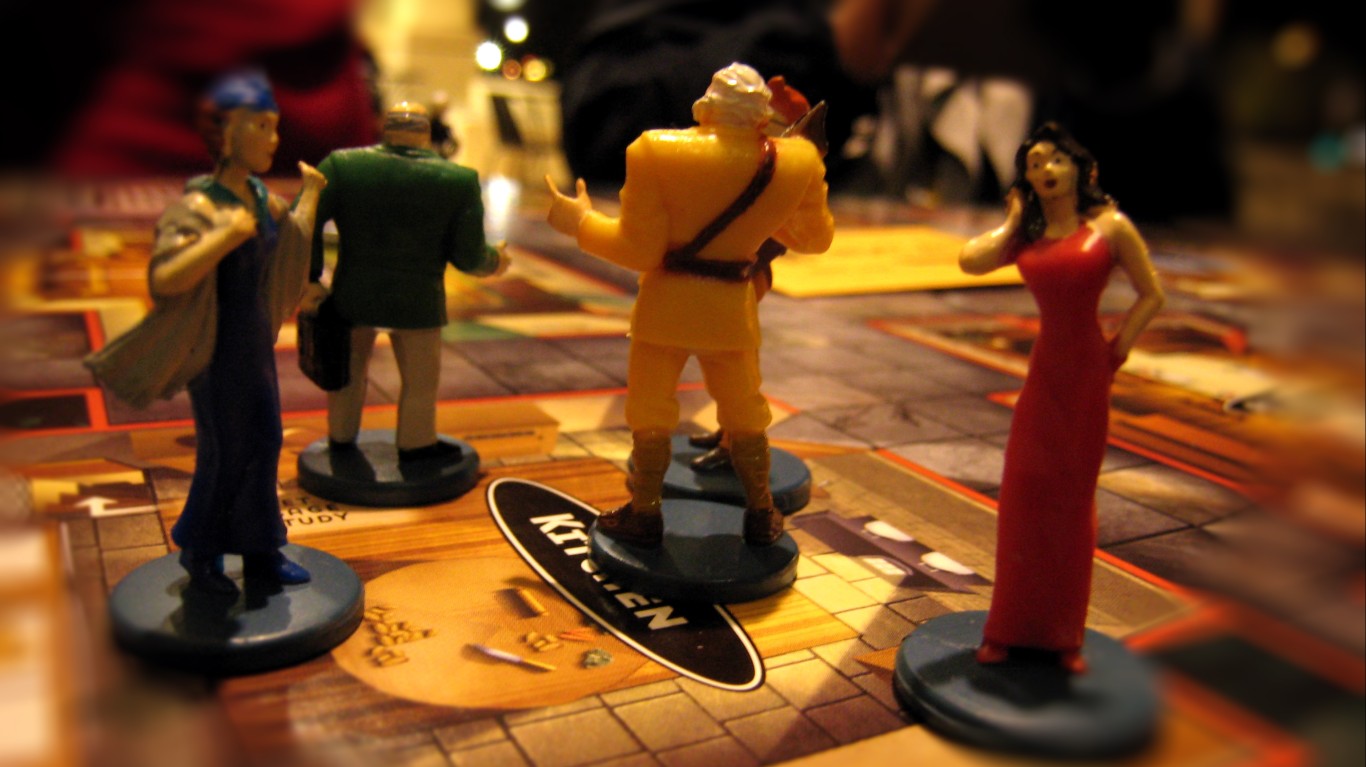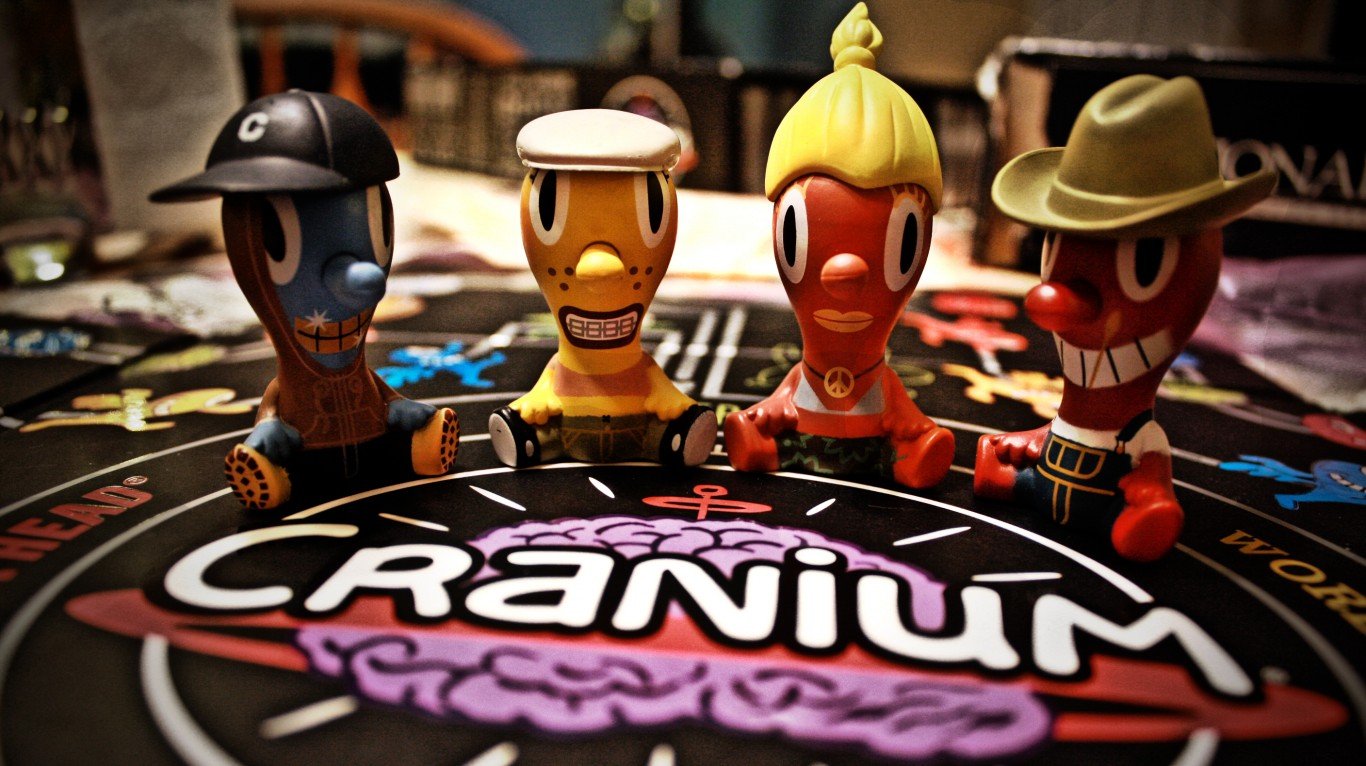

Whether stuck at home for a weekend, 10 days, or indefinitely, board games are an easy way to add some fun to a person’s days. There’s a wide range of board games available — from ancient games that are based on nothing but luck to new cult-favorite strategy games.
24/7 Tempo compiled a list of more than 20 of the most popular board games in history after reviewing lists of the best-rated and best-selling board games by various gaming e-commerce publications and sites.
Challenge yourself to put away the screens and other electronics and gather with your family – and possibly your pandemic pod — for a good old-fashioned board game. Some of the best board games are for kids, though adults may enjoy them as well, and others are more for the adult members of the family. Some only require two players, while others can accommodate a number of players.
When you are ready to get back to the screen, instead of binging on TV shows, you can keep working on your strategy skills with video games — these are the most followed video games franchises in the U.S.
Click here to see 22 of the most popular board games in the US and the history behind them

Backgammon
> Players: 2
> Skill(s) needed: Tactics, counting
> Goal: To move your pieces along and then off the board
The exact origin of Backgammon is unclear. The dice game’s history can be traced back more than 5,000 years to a civilization that lived in what is now Iraq. The modern game of backgammon may have stemmed from another game called tables played in 17th century England.
[in-text-ad]

Battleship
> Players: 2
> Skill(s) needed: Strategy, deduction
> Goal: To sink all of the opponent’s ships before he/she sinks all of your ships
Battleship is a guessing and strategy type game for two players. The game became popular as a pencil-and-paper game sometime during World War I, though according to one version of its origin it was invented in 1900. Battleship was turned into a board game in 1967 by Milton Bradley.
Blokus
> Players: 2
> Skill(s) needed: Strategy
> Goal: To lay as many of your pieces onto the board as possible
Blokus is an abstract strategy board game designed fairly recently by French mathematician Bernard Tavitian. The game was first released in 2000 by Sekkoia, a French publishing company. Tavitian created the game almost by mistake — he was designing a frame for a painting made up of geometric figures.
Candy Land
> Players: 7
> Skill(s) needed: Following directions
> Goal: To be the first to travel through all of Candy Land along the path of colored spaces
Candy Land was created in 1948 by Eleanor Abbott, a retired school teacher. Previously diagnosed with polio herself, Abbott’s goal was to help entertain children with the disease who were treated in a San Diego hospital.
[in-text-ad-2]
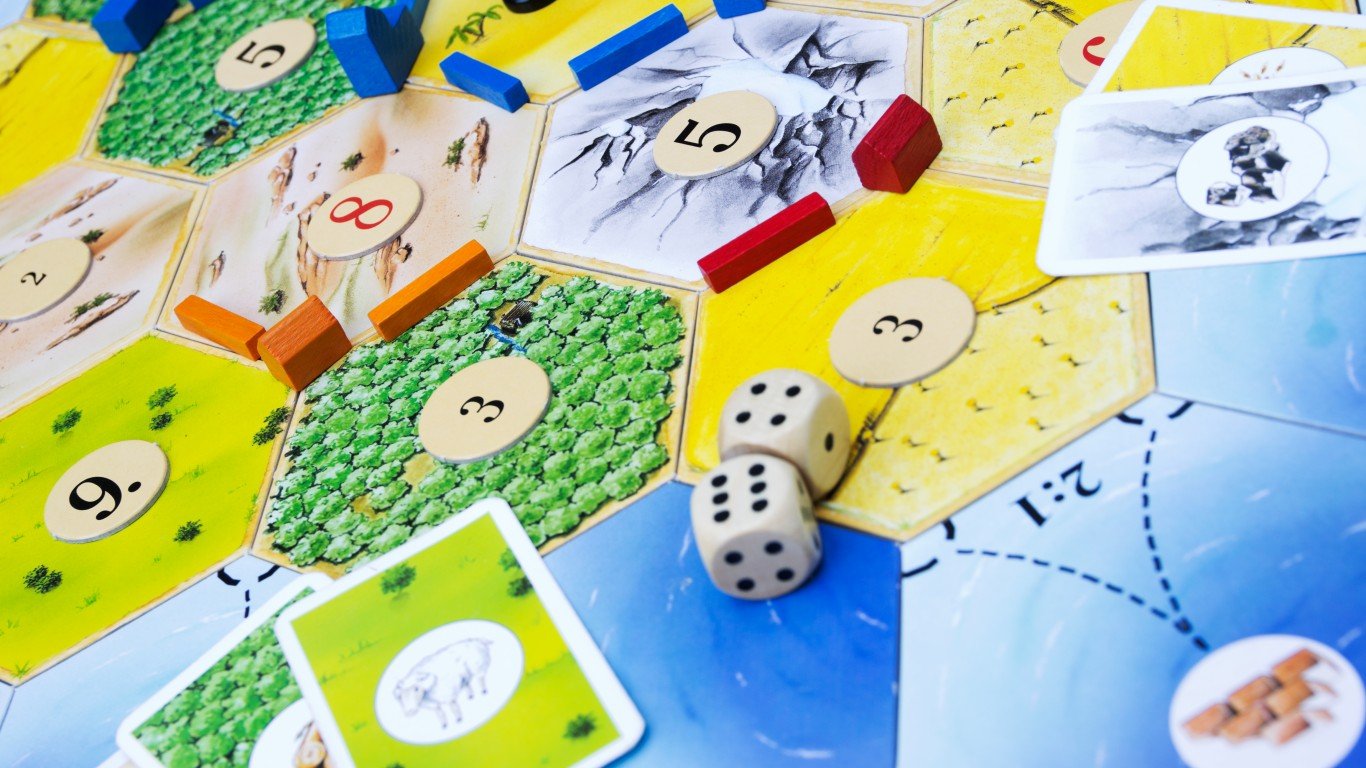
CATAN
> Players: 2 to 12
> Skill(s) needed: Strategy, negotiation, resource management
> Goal: To gain 10 points by building settlements, cities, roads, and armies
The game was invented in 1995 by German designer Klaus Teuber, who started designing board games in his basement as a way to escape the stresses of his jobs as a dental technician. The English version — “The Settlers of Catan” — was released in 1996. The game has become so popular that CATAN World Championships are held every two years.
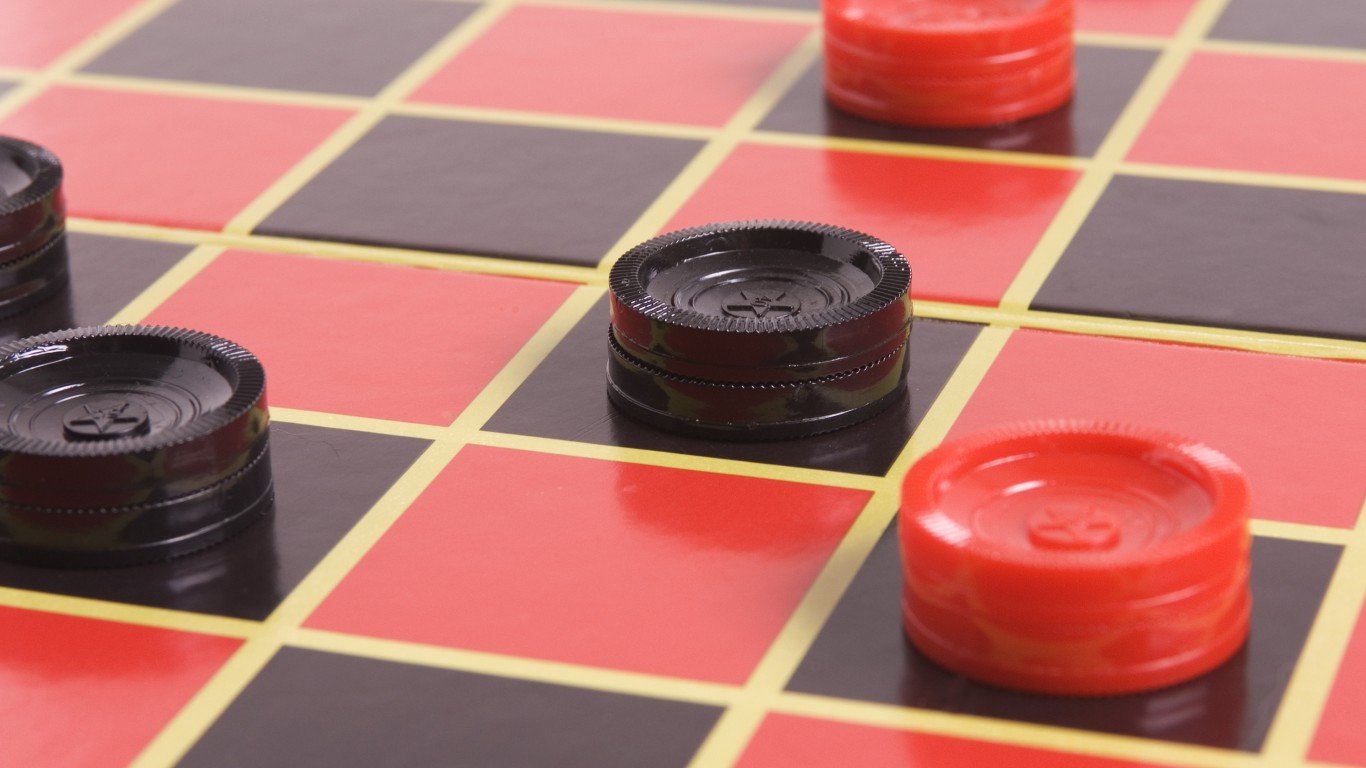
Checkers
> Players: 2
> Skill(s) needed: Tactics
> Goal: To jump over and remove the opponent’s pieces from the board
Checkers has ancient roots. The earliest version of the game was discovered in Mesopotamia, or modern day Iraq, during an archeological dig. It was dated back to 3000 B.C. The game started being played on a chess board in 1100. Then it was considered a women’s social game. Today’s version of Checkers originated in 1756, when an English mathematician wrote the current rules. The first Checkers championship was held in 1847.
[in-text-ad]

Chess
> Players: 2
> Skill(s) needed: Strategy, tactics
> Goal: To checkmate (capture) the opponent’s king
Chess is an ancient game with several theories about its origin. Perhaps the most widely accepted version is that the game originated in India in the fifth or sixth century A.D. One of the earliest games connected to chess was called chaturanga, which is a type of battle formation. The rules of chess, as it’s played today, were created in the 16th century. Some players began adding in clocks as a further variable some three centuries later.

Chutes and Ladders
> Players: 5 to 7
> Skill(s) needed: Counting, observation
> Goal: To reach the top square first
Though Chutes and Ladders in its current form has been around since 1943, the concept of the game is much older. Earliest versions date back to India in the second century B.C. Then, the game symbolized the story of life where you rise due to karma, represented by ladders, but are set back by kama, or desire, represented by snakes.
Clue
> Players: 6
> Skill(s) needed: Deduction
> Goal: To figure out the details of the murder
Clue is a murder mystery game invented between 1943 and 1945 in the U.K. during of World War II. People spent much time indoors during air-raid blackouts, so pianist Anthony Pratt and his wife designed a game to help pass the time. Pratt based the game on murder mystery party games he was part of before the war.
[in-text-ad-2]

Connect Four
> Players: 2
> Skill(s) needed: Tactics
> Goal: To first form a line of four of one’s own discs
Connect Four has no definite history. The earlier version of the game is thought to originate with well-known explorer Captain Cook, who used to play a similar game of four-in-a-row for hours in his cabin. The name “Connect Four” was first coined by Milton Bradley Company, now Hasbro, in 1974.
Cranium
> Players: 4
> Skill(s) needed: Creativity
> Goal: To be the first to move around the entire board and into the Cranium Central
Cranium, which bills itself as the “whole-brain” game, is basically a combination of several other popular board games, including Charades, Pictionary, and Trivial Pursuit. Cranium was created in 1998 by Whit Alexander and Richard Tait. Tait created the concept of what later became Cranium after he and his wife played and won at Pictionary but lost at Scrabble. He wanted to play a game where all players can get a chance to shine.
[in-text-ad]

Monopoly
> Players: 2 to 8
> Skill(s) needed: Negotiation, tactics, resource management
> Goal: To remain financially stable and force opponents into bankruptcy by buying and developing property
The real estate board game has its origins in 1903, when Elizabeth Magie, who worked as a stenographer, patented the game as a means to make extra money, but she never got credit for it. Her game was called the Landlord’s Game. Until recently it was widely accepted that Charles Darrow was the inventor of Monopoly, when, in fact, he first played it at a friend’s house.

Operation
> Players: 1 to 4
> Skill(s) needed: Dexterity
> Goal: To operate and fix as many ailments as possible without touching the injuries
The game was invented in the early 1960s by John Spinello, an industrial design student. He called it “Death Valley.” The main difference between his game and today’s version is that instead of a patient, “Death Valley” featured a person lost in the desert in search of water. Mel Taft, a game designer at Milton Bradley, the company that bought the rights to “Death Valley” from Spinello, tweaked the game by adding the surgery theme.

Othello
> Players: 2
> Skill(s) needed: Strategy, tactics, observation
> Goal: To have most of your color discs on the board at the end of the game
Othello’s origin can be traced back to 1880. Then, Lewis Waterman, using ideas from James Mollett’s “The Game of Annexation,” invented Othello under the name Reversi. The game we know today as Othello was introduced in the early 1970s by Gogo Hasegawa, who wrote the book “How to Win at Othello.”
[in-text-ad-2]
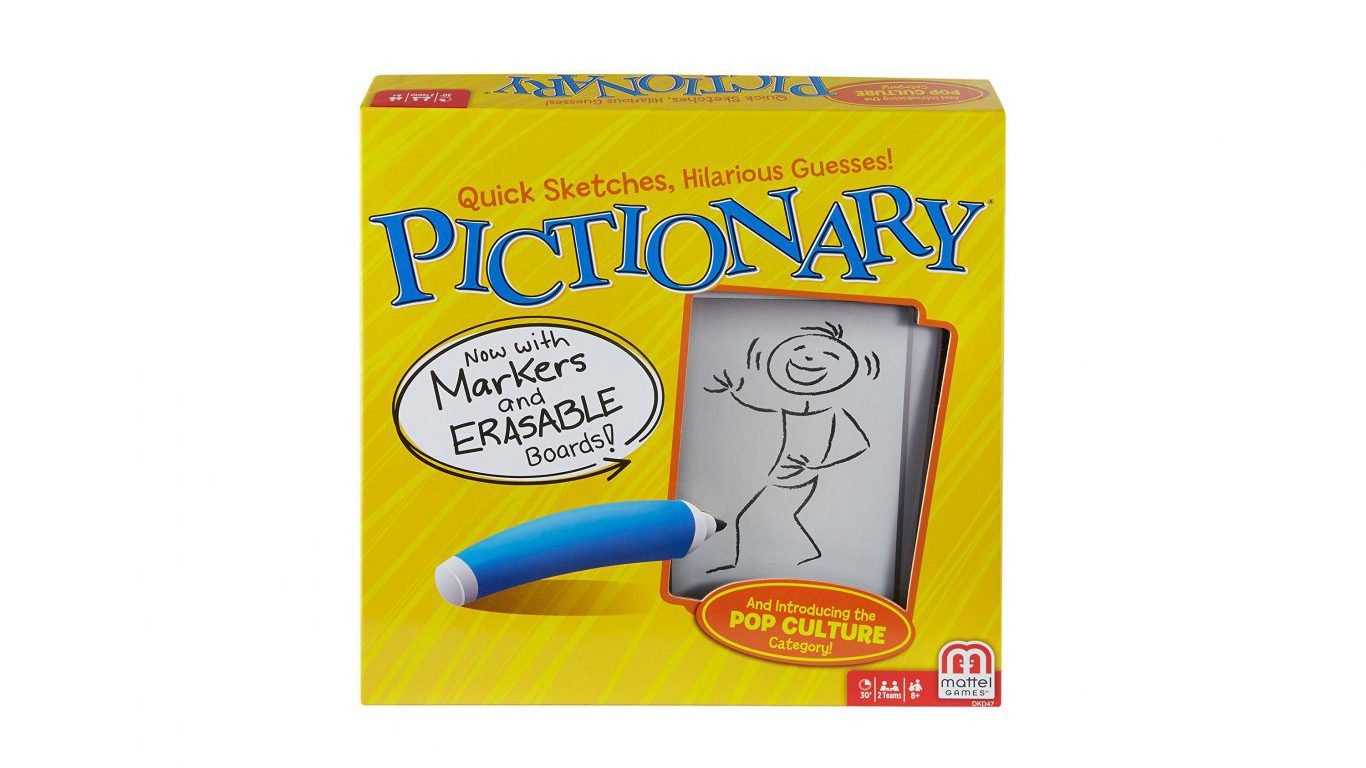
Pictionary
> Players: 2 teams
> Skill(s) needed: Drawing, image recognition, vocabulary
> Goal: To guess what the drawer is trying to communicate through their pictures
Pictionary was created by Rob Angel, a waiter in Seattle, in the early 1980s. The idea came to him during a party when a roommate suggested a game involving sketching random words until someone guessed one. Angel turned the concept into a board game.
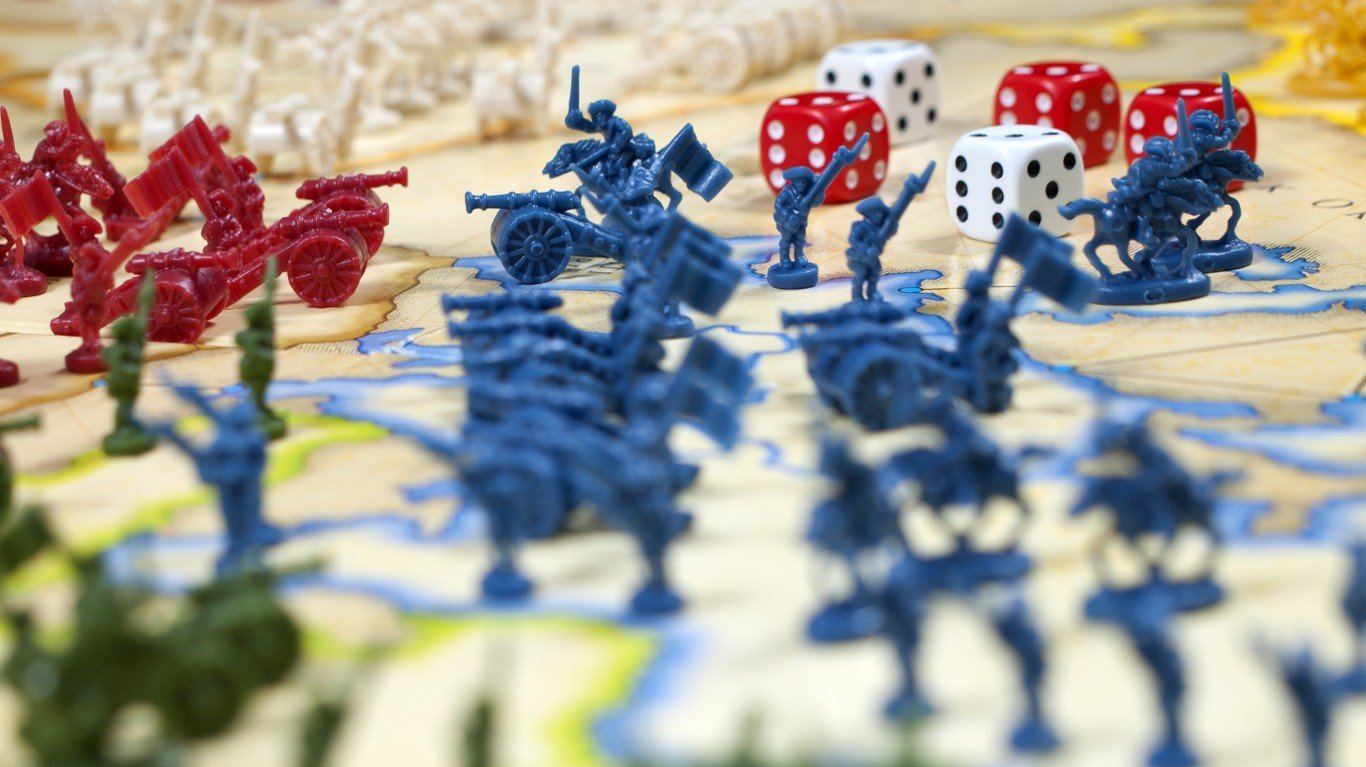
Risk
> Players: 2 to 6
> Skill(s) needed: Strategy, tactics, negotiation
> Goal: To conquer the world
Risk is a complex military strategy game in which players are battling each other’s troops with the goal to conquer the world. The game was invented during a family vacation in the early 1950s by Albert Lamorisse, a movie director who won an Oscar for best writing for “The Red Balloon.” Lamorisse called the game “La Conqueste du Monde,” which is French for “conquest of the world.”
[in-text-ad]

Rummikub
> Players: 2 to 4
> Skill(s) needed: Strategy (and luck)
> Goal: To get rid of all tiles by making groups or runs
Rummikub was invented in the 1940s by Efraim Hertzano. When card games were banned in Romania, Hertzano came up with the idea of substituting the cards with tiles. Creating each tile by hand, by the 1960s, he was hosting people over at his house every Saturday night to play the game. A World Rummikub Championship has been held every three years since 1991.

Scrabble
> Players: 2 to 4
> Skill(s) needed: Vocabulary, spelling
> Goal: To earn more points than other players by forming interlocking words
The board-and-tile game’s origin can be traced back to 1933, when Alfred Mosher Butts, an out-of-work architect, invented the game under the name “Lexiko.” He used his passion of analyzing games to create a new word game, to which he added a scoring system. He renamed the game to “Criss Cross Words” in 1938. He pitched the game to many publishing companies but was turned down. “Scrabble” as we know today was first published in 1948.
Sorry!
> Players: 2 to 4
> Skill(s) needed: Tactics, counting
> Goal: To be the first to get all four pawns from start to the “home” space
Sorry! Was trademarked in 1929 by William Henry Storey, an English game designer. The game was based on an Indian cross and circle board game called “Parcheesi.” The game was first published in the U.S. by Parker Brothers in 1934.
[in-text-ad-2]
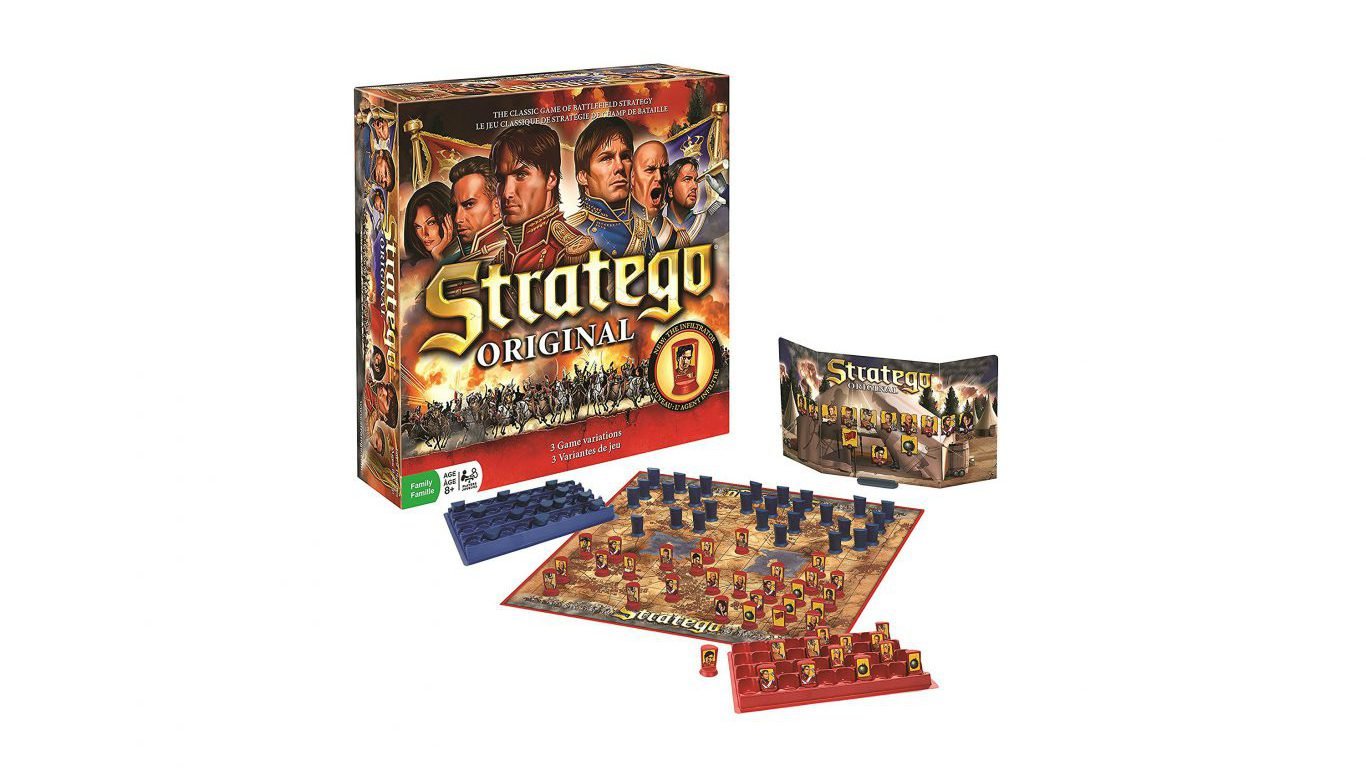
Stratego
> Players: 2
> Skill(s) needed: Tactics, memory, bluff
> Goal: To find and capture the opponent’s flag
The spy board game was created by Jacques Johan Mogendorff during World War II, and it was trademarked in 1942 by a Dutch company. Stratego can be traced back to China and a traditional Chinese board game called “Jungle” or “Game of Fighting Animals” or “Animal Chess.” Jungle has pieces of animals (instead of soldiers as is the case in Stratego), and they are not hidden from the opponent.

The Game of Life
> Players: 2 to 6
> Skill(s) needed: Counting, reading
> Goal: To finish the game as the wealthiest player
The Game of Life was invented in 1860 by Milton Bradley. Back then, Bradley called the game “Checkered Game of Life.” It was a popular parlor game. The earlier versions of the game included some grim squares (or consequences in the context of the game), including suicide, ruin, poverty, and disgrace.
[in-text-ad]
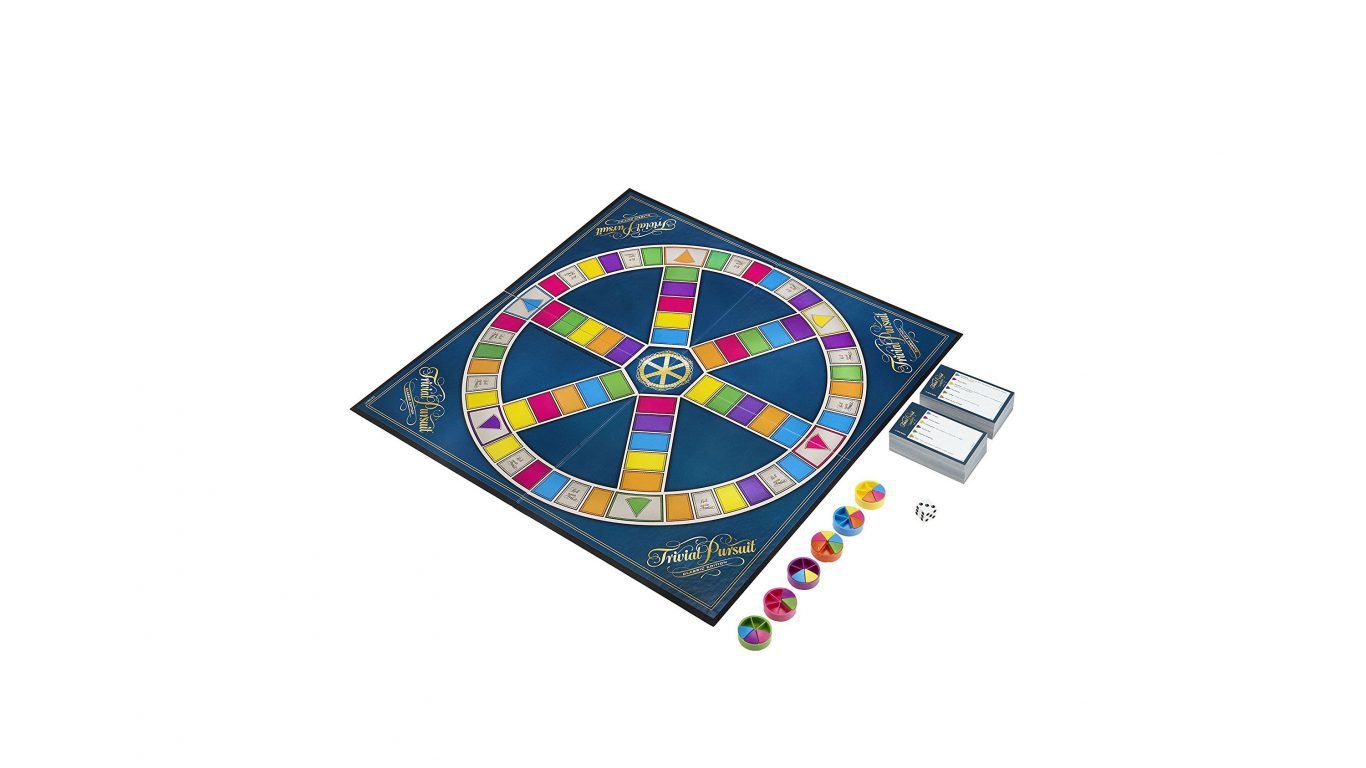
Trivial Pursuit
> Players: 2 to 6
> Skill(s) needed: Knowledge of pop culture
> Goal: To collect a pie in each color
Trivial Pursuit was invented in 1979 by Chris Haney, a photo editor, and Scott Abbott, a sports journalist. They were looking to play Scrabble, but because some pieces were missing, they decided to create their own game instead. The game was first released commercially in Canada 1981, when it was also trademarked.

Trouble
> Players: 2 to 4
> Skill(s) needed: Strategy, luck
> Goal: To be the first to get all four pieces around the board and back home
The roll-and-move board game was invented by the Kohner Brothers in 1965. The game was acquired by Milton Bradley, now Hasbro, in 1969. Many variations of the game have been released since then, including Double Trouble in 1987 and more recently Trouble – Olaf’s Adventure and Trouble: Netflix Super Monsters.
Essential Tips for Investing: Sponsored
A financial advisor can help you understand the advantages and disadvantages of investment properties. Finding a qualified financial advisor doesn’t have to be hard. SmartAsset’s free tool matches you with up to three financial advisors who serve your area, and you can interview your advisor matches at no cost to decide which one is right for you. If you’re ready to find an advisor who can help you achieve your financial goals, get started now.
Investing in real estate can diversify your portfolio. But expanding your horizons may add additional costs. If you’re an investor looking to minimize expenses, consider checking out online brokerages. They often offer low investment fees, helping you maximize your profit.
Thank you for reading! Have some feedback for us?
Contact the 24/7 Wall St. editorial team.
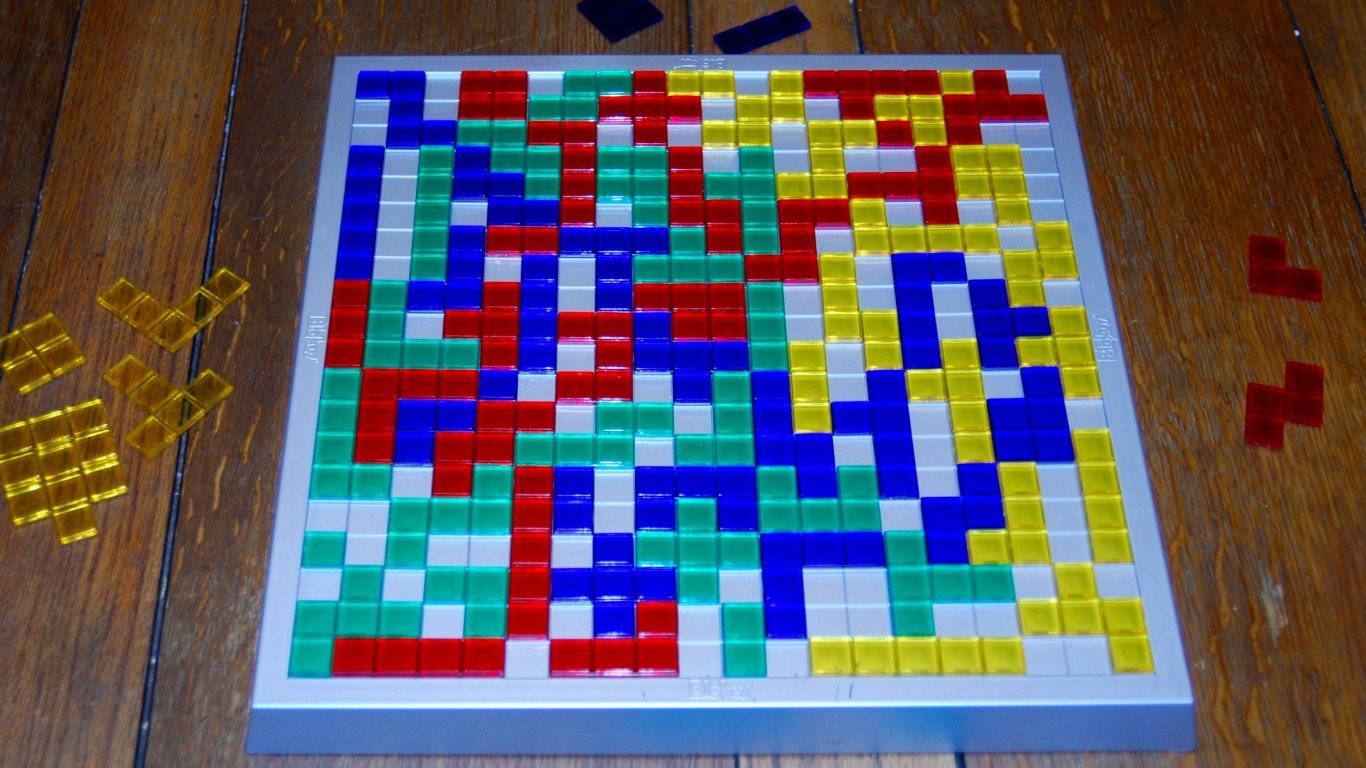
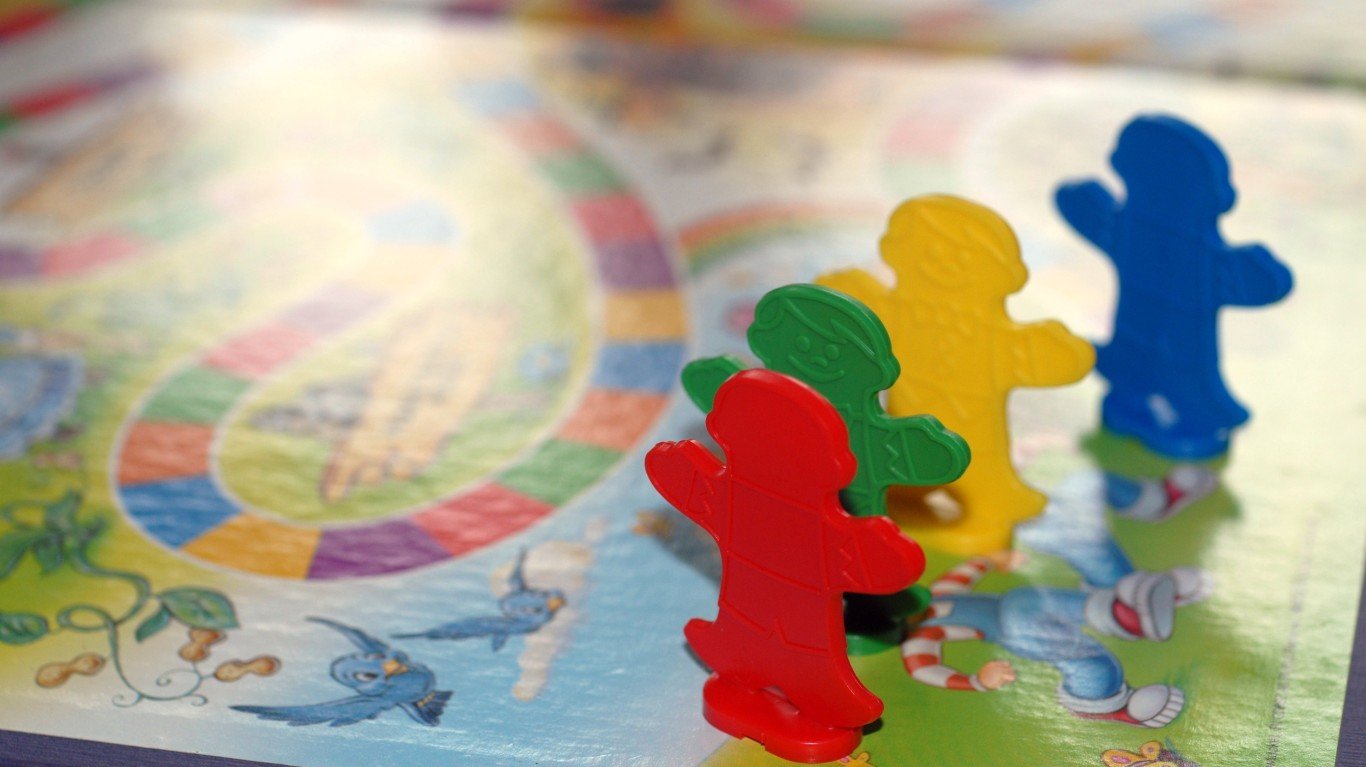
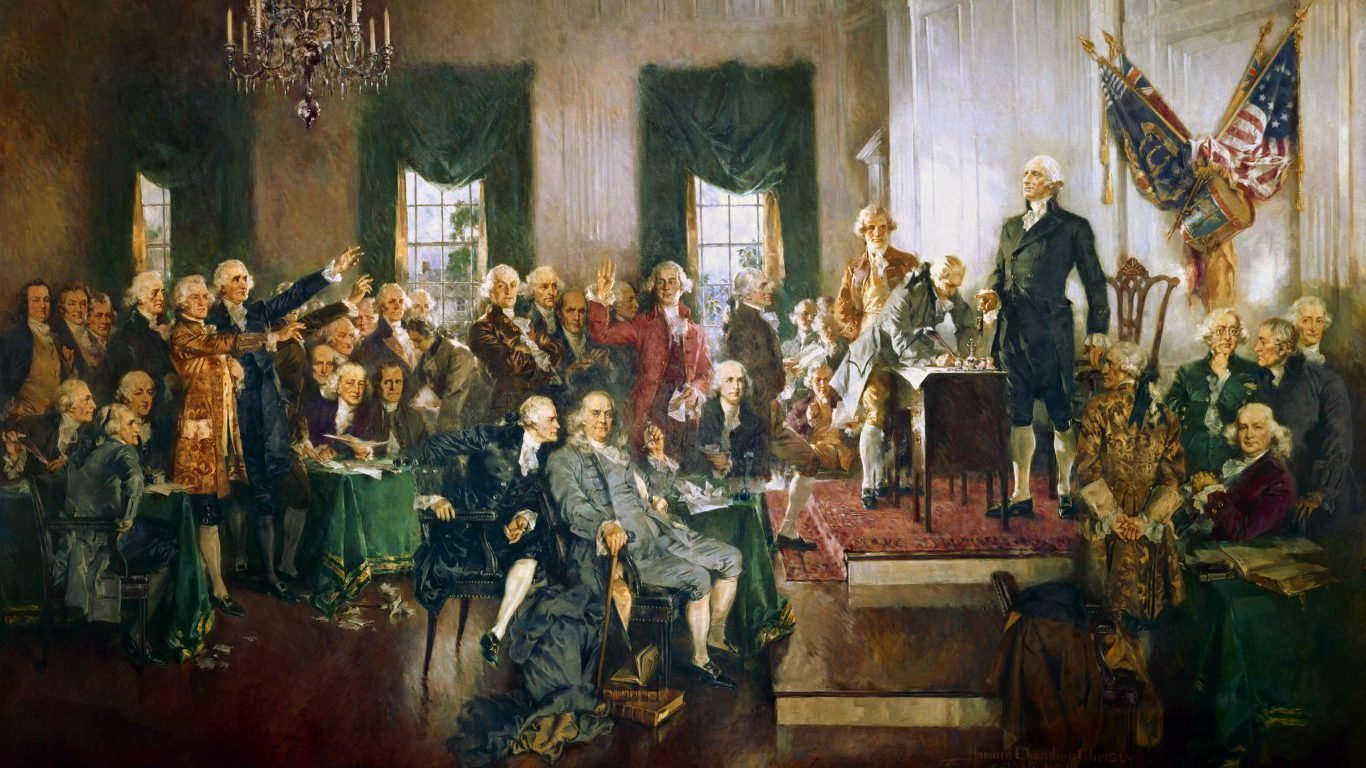 24/7 Wall St.
24/7 Wall St.